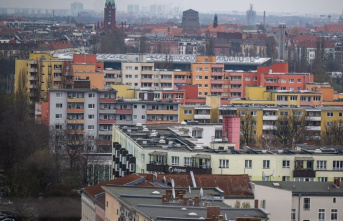An international research team has discovered a new chamber at the famous Cheops Pyramid of Giza in Egypt. Years ago, measurements had pointed to a hidden cavity. The existence of an astonishingly large chamber has now been confirmed by an endoscope passed through a narrow gap between two gabled stones. This was announced by the Technical University of Munich (TUM), which was involved with a team in the discovery.
The Cheops Pyramid is one of the Seven Wonders of the Ancient World. Last but not least, the find is particularly significant because the pyramid is considered one of the best-studied structures in the world, the TUM scientists explained on Thursday. There are no footprints or similar signs of human activity inside the chamber. Therefore, according to the TUM, the research group assumes that no one has seen this room for around 4,500 years.
The chamber is above the actual entrance on the north side of the pyramid. According to initial estimates, the corridor, which is between 17 and 23 meters above ground level, even exceeds the originally assumed size of at least five meters in length.
"Discovering a cavity in a pyramid is something special. But the fact that this chamber is large enough to accommodate several people makes it even more important," says Christian Große from the Chair of Non-Destructive Testing at TUM. The Munich-based company has been part of the international research team called Scan-Pyramids since 2019, which has been examining the Egyptian pyramids with different means and technologies since 2015.
Egyptologists consider the find extraordinary. "It's spectacular because the chamber is really big," said Egyptologist Alexander Schütze from the Ludwig Maximilian University, who was not involved in the research. However, the importance of the chamber is probably only a technical one. "It looks very much to me that this is another relief chamber that should take the immense pressure of the stones from the entrance structure," said Schütze. "The find will also advance the understanding of the construction method."
Last but not least, there are rooms above the king's chamber on which stones arranged in a gabled manner rest and which, according to current knowledge, serve to relieve the burden. The stones over the passages and chambers weigh millions of tons.
"Relief chambers are generally known," says the building researcher at the German Archaeological Institute in Cairo, Martin Sühlhof. It seems plausible to him if such cavities were constructed at the earlier entrance. Many questions about statics and the construction process are still open.
To this day there are still puzzles as to how the ancient Egyptians built the immense pyramids with blocks weighing many tons around 4500 years ago. The measurements of the Scan Pyramids team should also contribute to a better understanding of the construction history of the Cheops Pyramid and the internal structure.
The basis for finding the hidden chamber were measurements with muon tomography, an imaging method for three-dimensional imaging of large-volume objects using cosmic rays. These suggested the existence of a cavity in the so-called Great Pyramid, as the scientists involved reported in the journal "Nature" in 2017. Even then it was spectacular - the media was talking about the first discovery of this magnitude inside the Cheops pyramid since the 19th century.
For a closer examination, the TUM team led by Christian Große used methods such as radar and ultrasound. "The pyramids are part of the world cultural heritage. That's why we have to be particularly careful during the investigation so that no damage occurs," said Große. Radar and ultrasonic measuring devices could not only be used non-destructively, but in some cases even without contact.
The muon tomography initially showed differences in density in the structure, which the researchers investigated further. They then suspected that there were even two cavities of different sizes at different points in the pyramid. One has now been confirmed. The other cavity in the center of the pyramid - if confirmed - could be significantly larger. The pyramid still holds riddles.
According to the TUM, further research work is necessary. The exact function of the chamber and shaft system inside the monumental pyramid, which towers around 140 meters, has not been fully clarified.
There was even speculation as to whether the mummy of Pharaoh Cheops could be lying in one of the chambers. The sarcophagus in the King's Chamber was found empty. But researchers are more likely to assume that the mummy is not in the pyramid. "In my opinion, there is no reason to suspect some kind of hiding place where the remains were buried," said Schütze. The pyramid had been plundered, probably already in ancient times.
Sources: Scan Pyramids, "Nature" Technical University of Munich
See our archive: In Como, Italy, construction workers found an amphora in the middle of the mud under a building. Inside were 300 gold coins - neatly stacked. Presumably they were to be protected from marauding barbarians.











